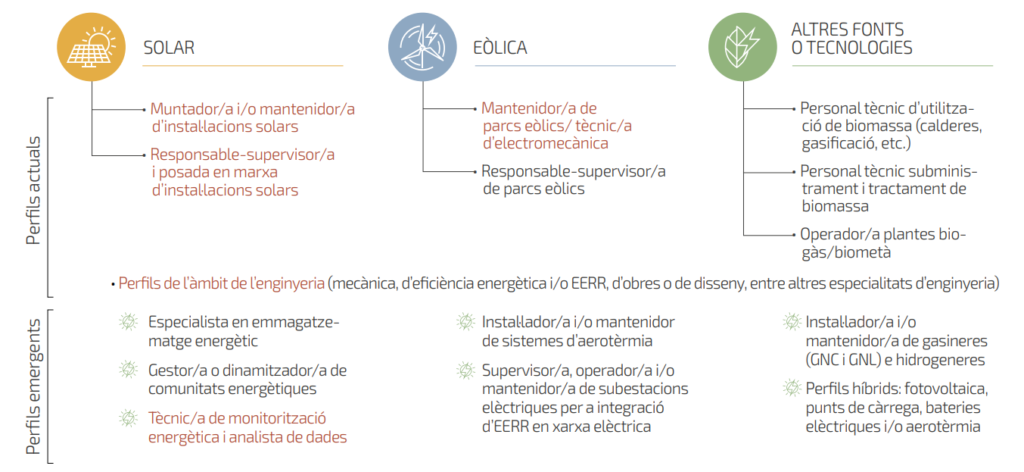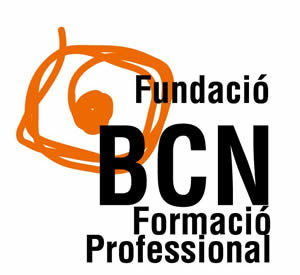Renewable Energies (EERR) are a clear vector of future and occupation that gradually grows globally and also at the metropolitan level. The EERRs, in addition to saving medium-/long-term costs in an environment where uncertainty of energetic costs is increasing, receive institutional and regulatory push to advance in various objectives to achieve the objectives set by the European Climate Legislation, which establishes that EU countries will have to reduce their greenhouse gas (GHG) emissions by at least 55% by 2030, by 2050 by 2050 by the EU neutral On the other hand, trends such as decarbonization of industry, sustainable mobility and new circular production methodologies are growing vectors of demand linked to the installation and generation of EERR.
This drive towards deployment in the EERR, which seems to put us on a path without return, requires but support in one of the main pillars of this transition towards green energy, which is the talent necessary to be able to promote, manage, maintain and materialize the different infrastructure necessary for the generation of EERR.
The BCN Vocational Training Foundation, through the research “The Emerging Sectors in the RMB: the case of Renewable Energies”, prepared in collaboration with the AMB and IREC, has detected that 82.5% of companies in the sector have difficulties in finding the talent necessary to be able to carry out their activity. The main reasons given to explain this situation are: lack of qualified professionals; a low degree of specialization and little experience in the sector.
Specifically, the most relevant training contents that companies lack when incorporating a new professional profile into their workforce, as well as their active workforce, are:
1.Energy storage systems (accumulation, batteries…)
2. Photovoltaic installations (Single self-consumption and shared self-consumption)
3. Smart Networks
4. Energy communities
5. Hydrogen Technologies
6. Electrical distribution networks
7. Generation of renewable gases from waste.
On the other hand, despite being a sector with prospects for the future and significant employment, certain incongruities are detected, such as that the classrooms of VET degrees linked to this sector often do not finish filling in students (they do not prioritize it in their enrolment options) and there is no diversified supply network in 6 of the 7 counties that make up the RMB; only in Barcelonès can a diversified range of trainings be found. On the other hand, companies point to a series of normative figures that greatly complicate the stay of students in practice or in dual VET modality in the sector, as diverse requirements such as, for example, the need to have the installer card to be able to locate in various activity environments, greatly limits the access of talent in training to real work environments.
If we look at the most demanding professional profiles in the sector, the research of the BCN Vocational Training Foundation offers this “map” of current and future professional profiles structured according to the type of renewable energy:

*In red the most difficult coverage profiles
It can be seen how the case of technical talent associated with installation and maintenance is what is considered by companies to be the most difficult to cover, together with engineering profiles, a situation that not only occurs in this sector, and that generates a decompensation between the ability of the system to pour technicians into the labour market and the volume of technicians requested by a labour market that requires increasingly technical to develop its activity. To this increase in technical talent specializations is added an unprecedented process of demographic relay that currently has no vis-à-vis being sustainable in terms of labour replacement, especially in the industry sector and in technical areas.
Once the situation has been analyzed, both supply and demand, the following recommendations within the aforementioned research are considered key:
- Guidance and information on the sector
- Improvement of educational and professional orientation for young people and other groups.
- Communication campaigns to publicize the training offer.
2. Update, adequacy and specialization of the training offer
- Actions focused on reducing the difficulties of contracting the photovoltaic plate installer profile.
- New specialization courses that respond to emerging profiles.
- Working groups to improve the degree of adaptation of VET to the needs of the wind sector and the design of the Energy Efficiency and Solar Thermal Energy cycle. s Review of the curricula of the different cycles associated with the EERR.
3. Vocational Training Centres and Teachers
- Improvement of the educational resources of the centers (material donation, new facilities, simulation learning projects, etc.)
- To provide continuity and reinforce the training offer aimed at teachers.
Complete study of the renewable energy sector of the BCN Vocational Training Foundation





